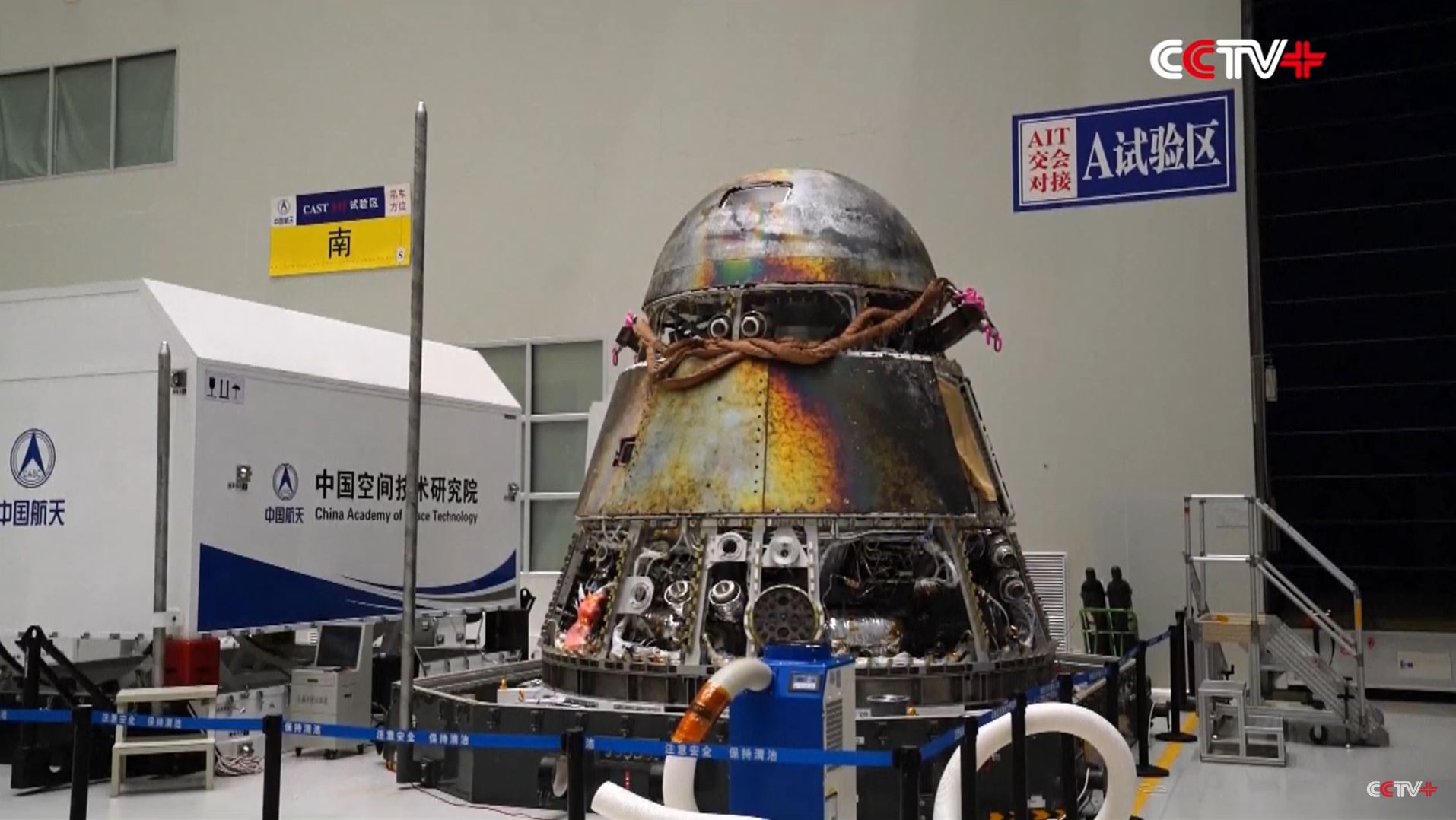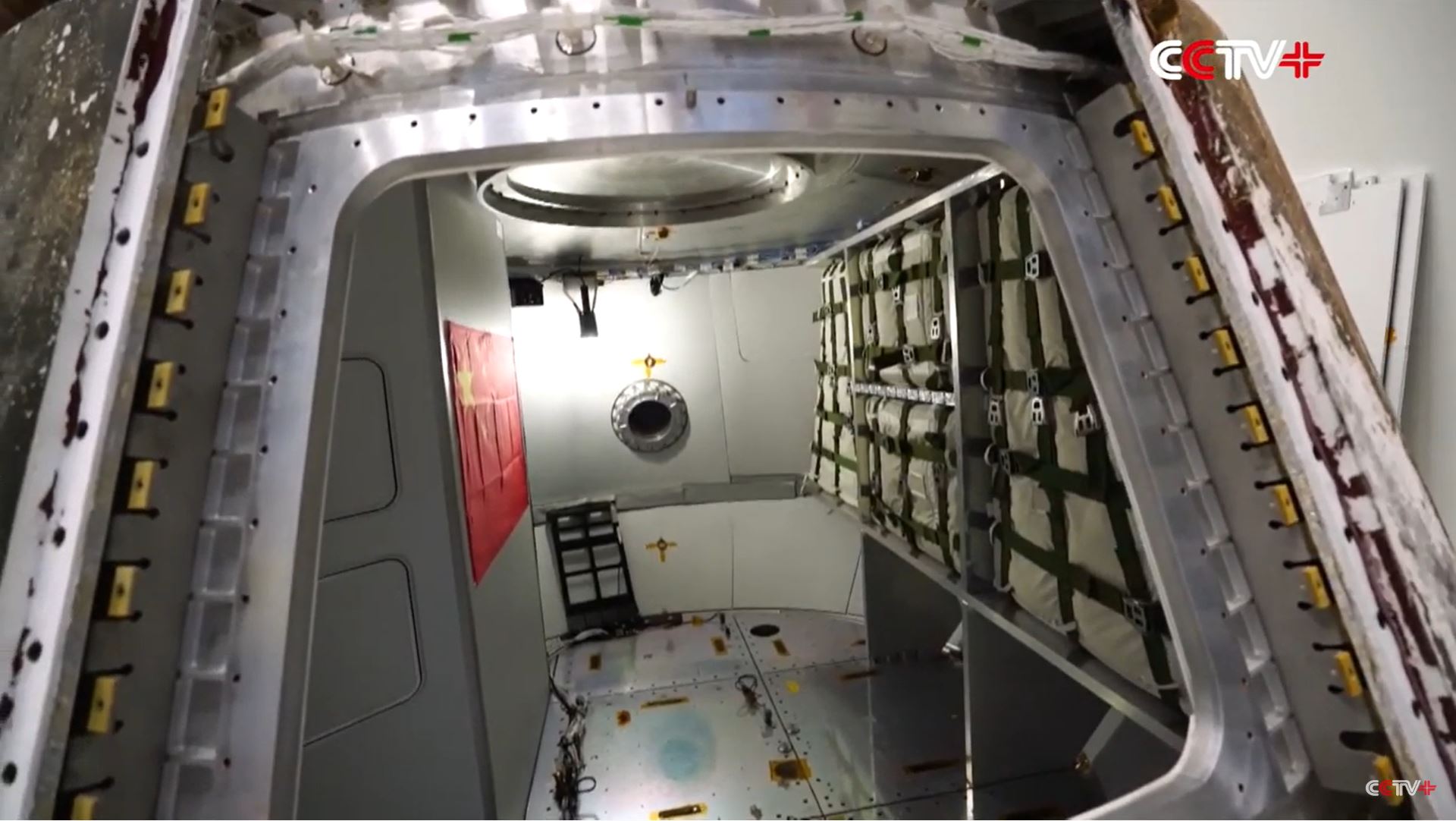China reveals details of next-gen crew spacecraft's 1st test flight
The as-yet unnamed craft toted lots of experiments up during last month's test flight to orbit.
A first glimpse inside the prototype of China's next-generation crew-carrying spacecraft has been provided in Beijing following a successful uncrewed test flight in May.
The capsule, which has not yet been named, launched on a Long March 5B rocket from Wenchang on May 5, carrying out a first uncrewed test for future deep-space missions.
The new two-module spacecraft performed well in orbit, and the crew capsule returned to Earth on May 8, testing a high-speed atmospheric reentry that the spacecraft needs to survive in order to safely bring astronauts home from the moon.
Related: Photos of China's new spacecraft to take astronauts to the moon
The crew capsule survived temperatures of around 5,432 degrees Fahrenheit (3,000 degrees Celsius) during reentry.
The capsule provides 459 cubic feet (13 cubic meters) of internal space, allowing six or seven astronauts to ride it. China’s current crew spacecraft, the Shenzhou, can carry three astronauts.
A look inside the new craft shows a living zone on the left, including a toilet and a folding dining table. Storage bags and racks on the right were present only to test transport capacity during the test mission.
Breaking space news, the latest updates on rocket launches, skywatching events and more!
The test flight overall verified numerous technologies and returned data for a range of experiments, Chinese officials said.
"We opened the return capsule and retrieved the data from the black box, including the data about the force and heat, as well as the temperature data related to aerodynamic heating, so we can get more data to test our reentry and return technologies and all other critical technologies," Guo Bin, a designer of the next-generation crew spaceship with the China Academy of Space Technology (CAST), told Chinese media.
Guo said the flight proved new heat shielding technologies and aerodynamic configurations of the spacecraft.
Experiments aboard the spacecraft included a 3D printing system for microgravity environments, gigabit-level high-speed communications between the ground and the spacecraft, and an on-orbit leakage and collision detection experiment that uses sound waves.
The crew capsule also carried nearly 4.4 lbs. (2 kilograms) of seeds for space irradiation experiments. Cosmic radiation, microgravity and other factors combine to generate mutations of the crops’ genetic material, which may prove beneficial and lead to the cultivation of new varieties.
The mission was overall a huge success for China, officials said. The launch qualified the Long March 5B to begin launching modules for the planned Chinese space station. The performance of the new-generation spacecraft means a crewed test could follow to the station in the coming years.
Two versions of the new spacecraft are in development. One will be capable of carrying six astronauts, or three astronauts and 1,100 lbs. (500 kg) of cargo to the space station. The other will be capable of more demanding missions to deep space, which involve harsher radiation environments and greater reentry velocities.
The spacecraft’s docking system suggests that it could dock with the International Space Station. China, however, is not part of the ISS program.
- Latest news about China's space program
- Watch China simulate a Mars landing for 2020 mission to the Red Planet
- Russia and China are teaming up to explore the moon
Follow us on Twitter @Spacedotcom and on Facebook.
OFFER: Save 45% on 'All About Space' 'How it Works' and 'All About History'!
For a limited time, you can take out a digital subscription to any of our best-selling science magazines for just $2.38 per month, or 45% off the standard price for the first three months.

Andrew is a freelance space journalist with a focus on reporting on China's rapidly growing space sector. He began writing for Space.com in 2019 and writes for SpaceNews, IEEE Spectrum, National Geographic, Sky & Telescope, New Scientist and others. Andrew first caught the space bug when, as a youngster, he saw Voyager images of other worlds in our solar system for the first time. Away from space, Andrew enjoys trail running in the forests of Finland. You can follow him on Twitter @AJ_FI.



